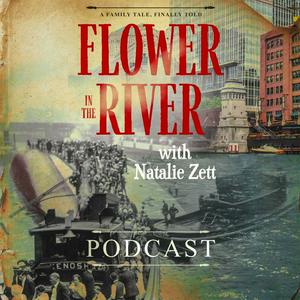Good-Bye, Everybody: A City, A Ship, A Song
Send us a text🛳️🎶 “Goodbye, Everybody…” That was the jaunty tune Benton Harbor residents remembered the Eastland playing from its calliope — long before the disaster.🎙️ In Episode 112 of Flower in the River, we travel to Benton Harbor and St. Joseph, Michigan — twin port cities on Lake Michigan — to uncover their overlooked connection to the Eastland. A year before the tragedy, the ship raced across the lake in a friendly steamer rivalry, cheered on by local crowds. It was a different time, full of hope and hometown pride. Then came July 24, 1915. And everything changed. 💬 This episode includes:Rare interviews with survivors and local witnessesForgotten details from small-town newspaper archivesThe eerie legacy of “Goodbye, Everybody” — remembered years later as the song that once echoed from the Eastland’s decks A city that cheered… and then mournedResources:The News-Palladium (Benton Harbor, Michigan), June 15, 1914The Herald-Palladium (Benton Harbor, Michigan), July 24, 1965“Good-Bye, Everybody,” Henry Burr, 1912. Library of Congress National Jukebox• Hilton, George W. Eastland: Legacy of the Titanic. Stanford University Press, 1995. See Chapter 3 for coverage of the St. Joseph–Chicago Steamship Company Book website: https://www.flowerintheriver.com/ LinkTree: @zettnatalie | Linktree LinkedIn: https://www.linkedin.com/in/natalie-z-87092b15/ Instagram: https://www.instagram.com/zettnatalie/ YouTube: Flower in the River - A Family Tale Finally Told - YouTube Medium: Natalie Zett – Medium The opening/closing song is Twilight by 8opus Other music. Artlist


